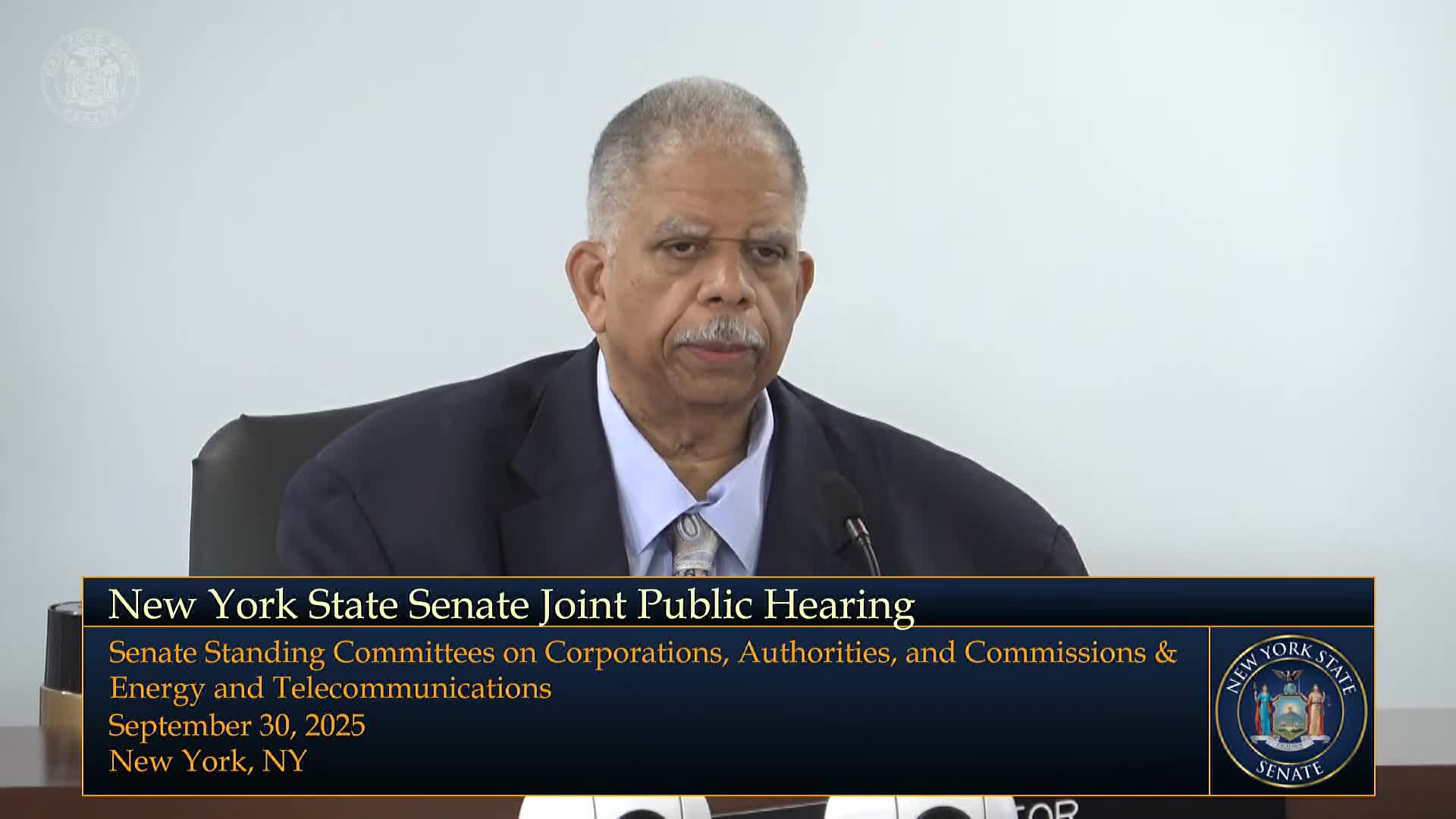Advocates press senators to reform rate‑case process, seek intervener funding and end secret settlements
October 01, 2025 | 2025 Legislature NY, New York
This article was created by AI summarizing key points discussed. AI makes mistakes, so for full details and context, please refer to the video of the full meeting. Please report any errors so we can fix them. Report an error »

A coalition of consumer, environmental and community groups told a New York Senate joint committee that the current utility rate‑case process is opaque, favors utilities and leaves low‑resource intervenors at a disadvantage. Witnesses from the Public Utility Law Project (PULP), Fossil Free Tompkins, AARP, Earthjustice, the Energy Justice Law and Policy Center and others described repeated problems with confidentiality in settlement negotiations, late filings and barriers to meaningful participation. Lori Wheelock, executive director of PULP, told the committee the mix of litigated and settlement tracks in rate cases creates a structural incentive for outcomes settled behind closed doors. She recommended a statutory review of the rate‑case regime, more transparent rules for settlements, an office of public participation or an independent utility consumer advocate, and intervener funding so community groups and small organizations can fairly engage. Irene Weiser of Fossil Free Tompkins said confidentiality makes potential abuses invisible — from last‑minute scheduling to agenda control and lack of cost justifications — and recommended restoring a more transparent process, appointing independent mediators, and reviewing the Public Service Commission’s settlement guidelines. AARP told senators the result is an "uneven playing field": utilities deliver well‑resourced legal and technical teams funded through rates, while residential consumers and senior advocates rarely have comparable access. AARP and other witnesses supported legislation to create an independent utility consumer advocate and to expand funding and outreach to enroll eligible households in affordability programs. Earthjustice and the Energy Justice Law and Policy Center urged the commission and the legislature to require quantitative CLCPA compliance assessments in rate filings and settlements rather than formulaic language that simply concludes a proposal furthers CLCPA goals. Earthjustice recommended setting sector‑wide greenhouse‑gas benchmarks for the gas distribution system and creating integrated gas‑and‑electric planning instead of dozens of siloed dockets. Advocates also urged stronger requirements for public outreach, easier access to rate‑case materials, and more staff resources at the Department of Public Service to review complex filings. Several witnesses proposed a blue‑ribbon review panel to study alternatives, including performance‑based regulation, prudence review models, and multi‑year litigated rate plans with clearer protections for intervenors. Lawmakers pressing the panel said they wanted concrete draft legislation and suggested a modest start: a $1 million pilot or state funding to begin intervener support and a possible independent consumer advocate office. National Grid and utility representatives who later testified told senators settlements can speed outcomes and allow creative benefits that litigated cases do not, and that utilities have taken steps to increase outreach and low‑income assistance. But several lawmakers and advocates said they still encounter secrecy that prevents public scrutiny of key tradeoffs and urged statutory changes and administrative fixes to improve transparency.
View the Full Meeting & All Its Details
This article offers just a summary. Unlock complete video, transcripts, and insights as a Founder Member.
✓
Watch full, unedited meeting videos
✓
Search every word spoken in unlimited transcripts
✓
AI summaries & real-time alerts (all government levels)
✓
Permanent access to expanding government content
30-day money-back guarantee

